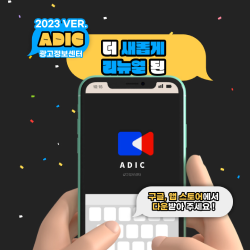자료요약
본 연구는 2000년대 한국사회가 처해 있는 새로운 자본주의, 신자유주의(neoliberalism)의 조건 속에서 광고텍스트의 신화가 어떻게 작동하는지 신자유주의적 자본주의의 대표적인 금융상품인 신용카드, 특히 현대카드 광고텍스트의 기호전략을 통해 살펴보고자 했다. 특히 대머리아저씨, 미니스커트를 입은 남자, 곰돌이 탈을 쓴 플레이보이, 인디밴드가수, 아담과 이브, 헝그리 복서, 동성애적 분위기의 여성들, 심지어 앵무새에 이르기까지 사회의 아웃사이더 타자들을 등장시켜 온 현대카드 광고의 주체성의 정치를 중심으로 광고텍스트 기호의 변화를 살펴보았다. 이상의 논의를 바탕으로 본 논문은 2000년대 신자유주의적인 자본주의의 조건 속에서 현대카드와 같은 금융광고 텍스트가 다양한 사회적 타자들의 목소리를 상호텍스트적(소환, 희화화, 위반, 인용, 양가성, 패러디, 변칙, 패스티쉬, 변주 등) 형식을 통해 어떻게 회수하는지 그 정치성을 규명해보고자 했다.
This paper examines how the myth of advertising texts works in the conditions of new capitalism and neoliberalism in the Korean society in the 2000s. In this study, we examine the semiotic strategy of credit card, especially HyundaiCard advertising text, which is a typical financial product of neoliberal capitalism. In particular, Hyundai Card has introduced social outsiders such as bald old man, miniskirt man, playboy with a bear, indie band singer, Adam and Eve, Hungry boxer, homosexual women and even parrots. This study examined the change of the advertisement text around the politics of the subjectivity of advertising. The purpose of this study is to analyze the myths of advertising texts in the 2000s in Korea by analyzing with the concept of intertextuality and recuperation based on Kim(2018)`s study. This study concludes that through the repeated intertextual recuperation endeavor, credit card advertising continues to maintain its ownership of myth, becoming a medium of culture that goes beyond its economic trades. and finally it write an advanced myth.
This paper examines how the myth of advertising texts works in the conditions of new capitalism and neoliberalism in the Korean society in the 2000s. In this study, we examine the semiotic strategy of credit card, especially HyundaiCard advertising text, which is a typical financial product of neoliberal capitalism. In particular, Hyundai Card has introduced social outsiders such as bald old man, miniskirt man, playboy with a bear, indie band singer, Adam and Eve, Hungry boxer, homosexual women and even parrots. This study examined the change of the advertisement text around the politics of the subjectivity of advertising. The purpose of this study is to analyze the myths of advertising texts in the 2000s in Korea by analyzing with the concept of intertextuality and recuperation based on Kim(2018)`s study. This study concludes that through the repeated intertextual recuperation endeavor, credit card advertising continues to maintain its ownership of myth, becoming a medium of culture that goes beyond its economic trades. and finally it write an advanced myth.
목차
1. 들어가며
2. 신자유주의 시대, 신용카드광고
3. 현대카드 광고의 상호텍스트적 타자성
4. 신자유주의의 시대, 광고신화의 진화
2. 신자유주의 시대, 신용카드광고
3. 현대카드 광고의 상호텍스트적 타자성
4. 신자유주의의 시대, 광고신화의 진화
현대카드광고
신자유주의
상호텍스트성
회수
타자성
Hyundaicard
neo-liberalism
intertextuality
recuperation











